İstanbul The Sultan Ahmet Mosque
The Sultan Ahmet Mosque
About Sultanahmet Mosque, it is a world-renowned mosque located on the historical peninsula of Istanbul. Also known as the "Blue Mosque" in English, its name is derived from the blue tiles adorning its interior. Constructed between 1609 and 1616 by Ottoman Sultan Ahmed I, the mosque represents a fusion of Ottoman and Byzantine architectural elements. The chief architect behind its design was Sedefkâr Mehmed Ağa, drawing inspiration from significant structures of the Byzantine Empire, such as the Hagia Sophia. Standing out with six minarets, a grand dome, and a spacious courtyard, Sultanahmet Mosque captivates visitors with its intricate blue and white tiled walls in the interior. The main dome, towering at 43 meters in height and with a diameter of 23.5 meters, is a prominent feature. As one of Istanbul's foremost tourist and religious sites, the mosque is both an active place of worship and open for visitors. While guests are welcome to explore the mosque's magnificent architecture and decorations, it may be closed to tourists during prayer hours. Sultanahmet Mosque holds a significant place in Istanbul's history and stands as one of the city's iconic landmarks.
Where is Sultanahmet Mosque?
Sultanahmet Mosque is situated on Sultanahmet Square in the historical peninsula of Istanbul. The mosque is in close proximity to the Hagia Sophia Museum and is also near the shores of the Sea of Marmara. Additionally, it is within a short walking distance of other significant historical and cultural sites such as Topkapi Palace. Located in one of Istanbul's tourist and historical districts, Sultanahmet Mosque is easily accessible for visitors.
How to Get to Sultanahmet Mosque?
Directions to Sultanahmet Mosque and transportation options are outlined below:
Public Transportation: Istanbul offers various public transportation options, including buses, trams, and metros. Sultanahmet, being close to the city center, is conveniently accessible by public transport. Examining local transportation maps can help determine a suitable route. Directions and Signs: Following city signs can guide you to Sultanahmet. The mosque is generally well-marked, so paying attention to signs while on the road can be beneficial. Checking with local transportation authorities or map applications for current routes and transportation details is always advisable.
Sultanahmet Mosque Sections
Detailed information about the sections of Sultanahmet Mosque:
Main Prayer Hall:
- The main prayer hall is a large interior space, typically adorned with carpets.
- The Mihrab, a niche indicating the direction of the Kaaba, is present, and Muslims face this during prayers.
- The Minbar is the place where the imam delivers sermons, and weekly sermons are conducted here for the mosque congregation.
- The Pulpit (Kürsü) is a platform where the Quran is recited, and religious speeches are delivered.
Dome:
- The prominent dome, a distinctive feature, is located in the center of the interior space.
- It boasts intricate interior design, emphasizing the breadth of the mosque's interior.
Minarets:
- Sultanahmet Mosque has four minarets, allowing the mosque to be seen prominently from all sides.
- Minarets are typically used in mosque architecture for the call to prayer.
Courtyard:
- The spacious courtyard is an open area for visitors and serves as the entrance to the mosque.
- The courtyard is surrounded by porticos and decorations.
Porticos:
- The porticos surrounding the mosque provide architectural aesthetics and shade.
- They offer visitors seating and resting opportunities.
Fountain:
- The fountain, located in the mosque's courtyard, serves as a water source.
- Muslims can perform ritual ablutions here before prayers. These sections collectively form a detailed and aesthetically pleasing example of Ottoman architecture. Each section is meticulously designed to fulfill the mosque's religious and cultural functions.
Activities Around Sultanahmet Mosque
What can be done around Sultanahmet Mosque? The surroundings of Sultanahmet Mosque are part of one of Istanbul's historical and tourist districts, featuring numerous historical and cultural sites, shopping places, and restaurants. Here are some activities you can engage in around Sultanahmet Mosque:
- Hagia Sophia Mosque: Situated right next to Sultanahmet Mosque, Hagia Sophia Mosque is a historic mosque. Originally constructed as a church in 537 by Byzantine Emperor Justinian, it was later converted into a mosque during the Ottoman era. Hagia Sophia is globally recognized for its architecture, mosaics, and historical significance, housing many artifacts from the Ottoman and Byzantine periods.
- Topkapi Palace: Located within walking distance from Sultanahmet Mosque, Topkapi Palace served as the primary palace of the Ottoman Empire. The palace is renowned for its historical artifacts and expansive gardens.
- Grand Bazaar and Spice Bazaar: For those who enjoy shopping, the Grand Bazaar and Spice Bazaar are large covered markets where various products, including traditional handicrafts, jewelry, textiles, and spices, are sold.
- Sultanahmet Square: This square surrounding the mosque hosts various events and cafes. Additionally, the square includes other historical structures surrounding the mosque.
- Gulhane Park: Close to the Sultanahmet area, Gulhane Park provides a beautiful place to relax and enjoy nature. The park allows for pleasant walks in a historic atmosphere.
- Walking Tours: Given Sultanahmet's rich historical and cultural offerings, walking tours are an excellent option to explore the area. Tours led by professional guides can provide insights into historical details and interesting information.
- Restaurants and Cafes: There are many traditional Turkish cuisine restaurants and cafes in the vicinity. Sitting down to enjoy traditional Turkish meals while appreciating the view is a delightful experience. Sultanahmet Mosque's surroundings offer a lively area for visitors, providing various experiences such as history, culture, shopping, and dining.

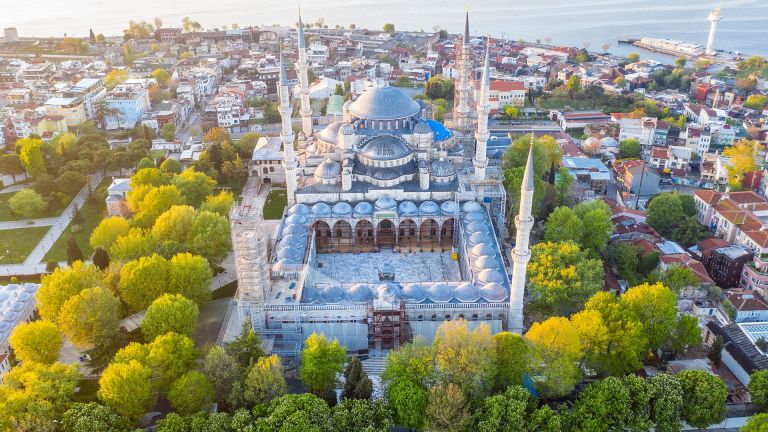

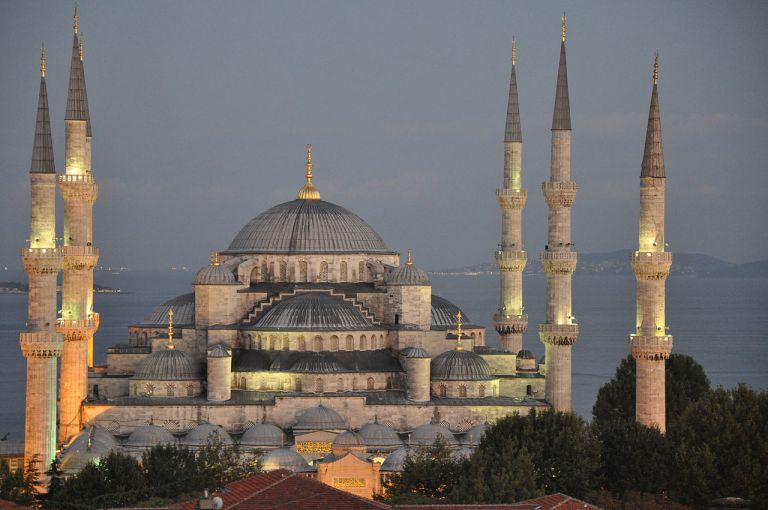
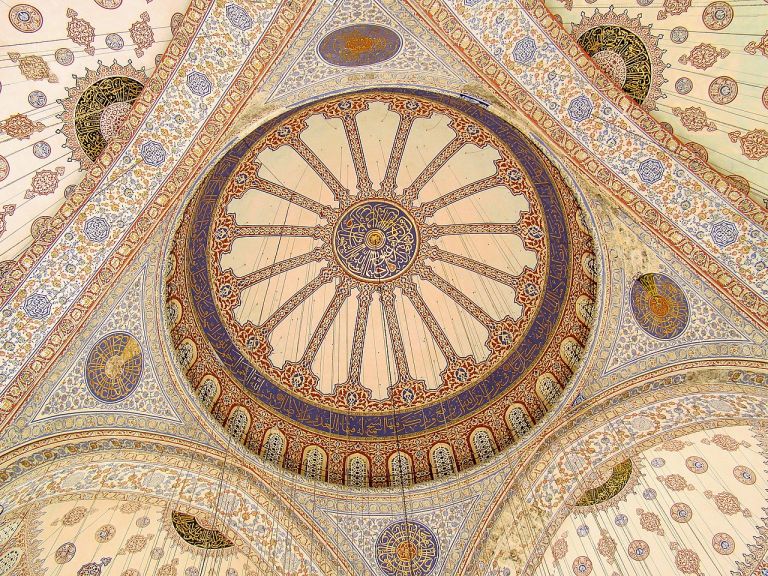
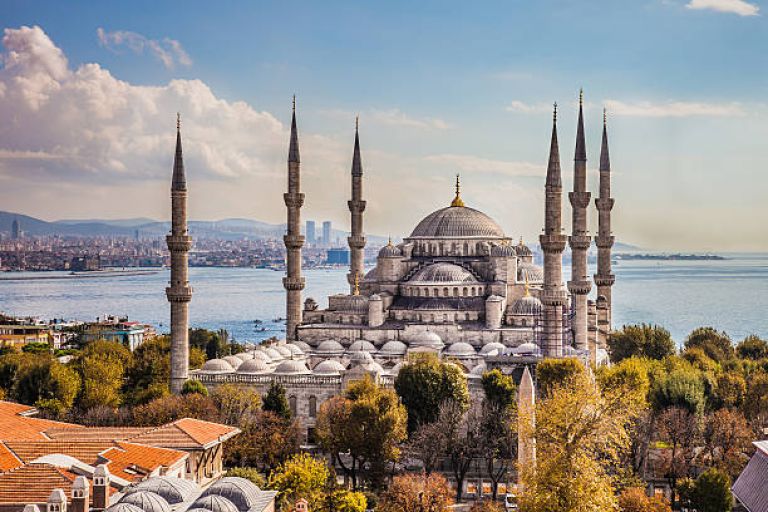
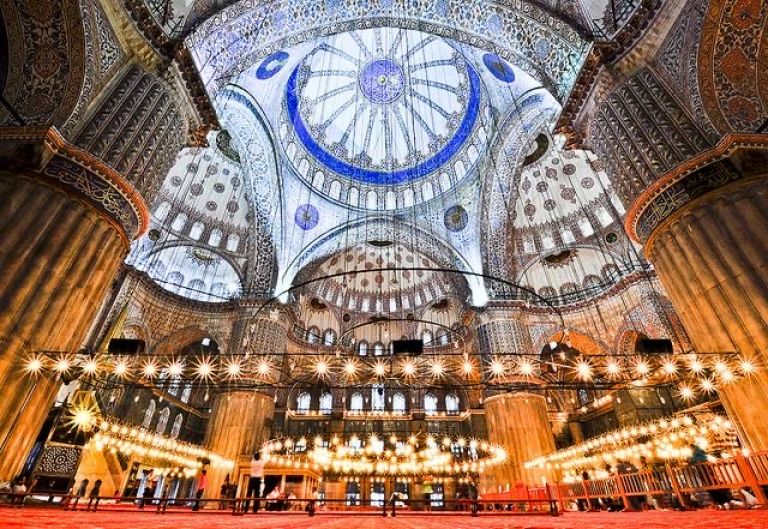






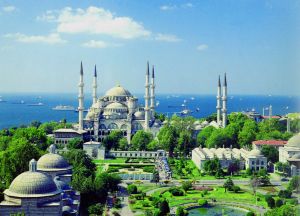
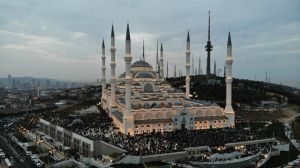
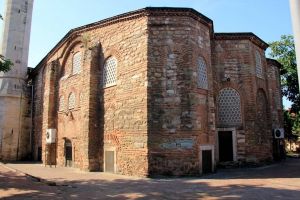
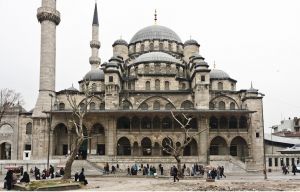

Değerlendirmeler